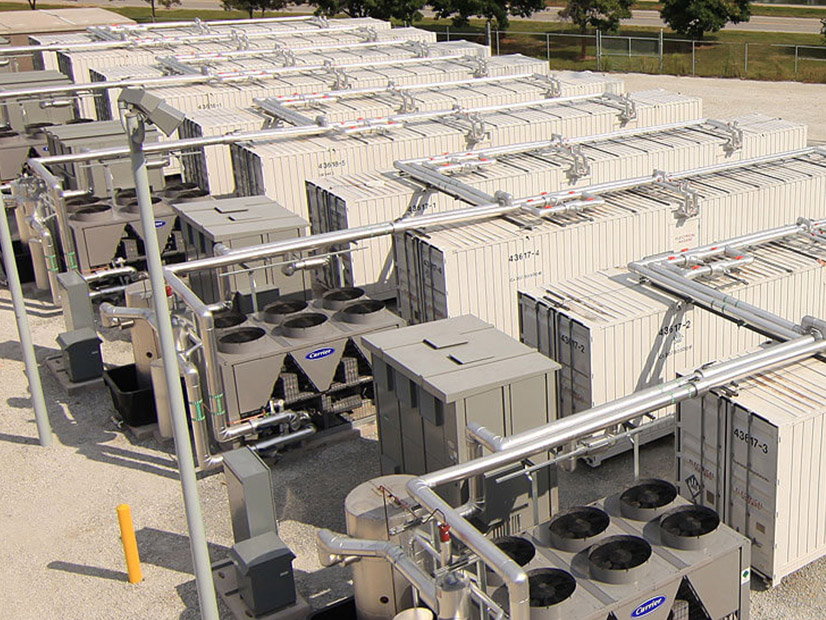Acting on Gov. Gavin Newsom’s emergency proclamation from July, the California Energy Commission approved a plan Wednesday by which batteries capable of providing at least two hours of discharge by the end of October 2022 can be licensed and connected to the grid in less time than it would normally take.
The move was the latest by state entities responding to Newsom’s emergency proclamation, which said the state faces an energy shortfall of up to 3,500 MW this summer and up to 5,000 MW next summer. The governor ordered “all energy agencies [to] act immediately to achieve energy stability” and specifically instructed the CEC to expedite licenses for battery storage facilities of 20 MW or more that can meet evening net-peak demand. (See Calif. Governor Proclaims Emergency as Blackouts Loom.)
“The benefits of this action for Californians is that it helps immediately address climate change impacts and increase grid resiliency and reliability to help us avoid outages,” CEC Deputy Director Shawn Pittard told commissioners in their monthly business meeting.
The CEC, California Public Utilities Commission and CAISO “are requested to work with the state’s load-serving entities on accelerating plans for the construction, procurement and rapid deployment of new clean energy and storage projects to mitigate the risk of capacity shortages and increase the availability of carbon-free energy at all times of day,” it said.
The governor ordered a series of measures, some of which backtrack on the state’s push toward clean air and energy. The closure of fossil fuel plants in the West without sufficient nonpolluting resources to replace lost capacity is contributing to the state’s energy shortfalls. (See CPUC Orders Additional 11.5 GW but No Gas.)
The July 30 proclamation authorized the CEC to license gas-fired generators that can deliver energy this summer and fall during evening net-peak hours, after solar goes offline. The generators must meet criteria such as operating on a “previously disturbed site” with an existing grid connection.
In response, the CEC adopted new rules in mid-August allowing it to issue emergency licenses to gas-fired generators of 10 MW or more to help alleviate potential energy shortfalls this summer and beyond. (See CEC to Issue Emergency Gas Generation Permits.)
In his emergency proclamation, Newsom cited the ongoing effects of heat waves, drought and wildfires in the West.
“Because of drought conditions, water supplies in California’s reservoirs have dropped to levels so low that hydroelectric power plants have had to reduce or cease production, leading to a reduction of nearly 1,000 MW of capacity and further exacerbating the drought’s impact on California,” he said. (See Western ‘Megadrought’ Curtails Hydropower.)
During a heat wave in July, the Bootleg Fire in southern Oregon derated the Pacific AC Intertie, “which delivers power from the Pacific Northwest to California, by almost 4,000 MW,” it noted. (See CAISO Declares Emergency as Fire Derates Major Tx Lines.)
“Many other transmission lines are located in high fire threat areas, including lines located in other states on which California depends, and thus wildfires are likely to continue impacting California’s energy supply unpredictably during this wildfire season,” Newsom said.


